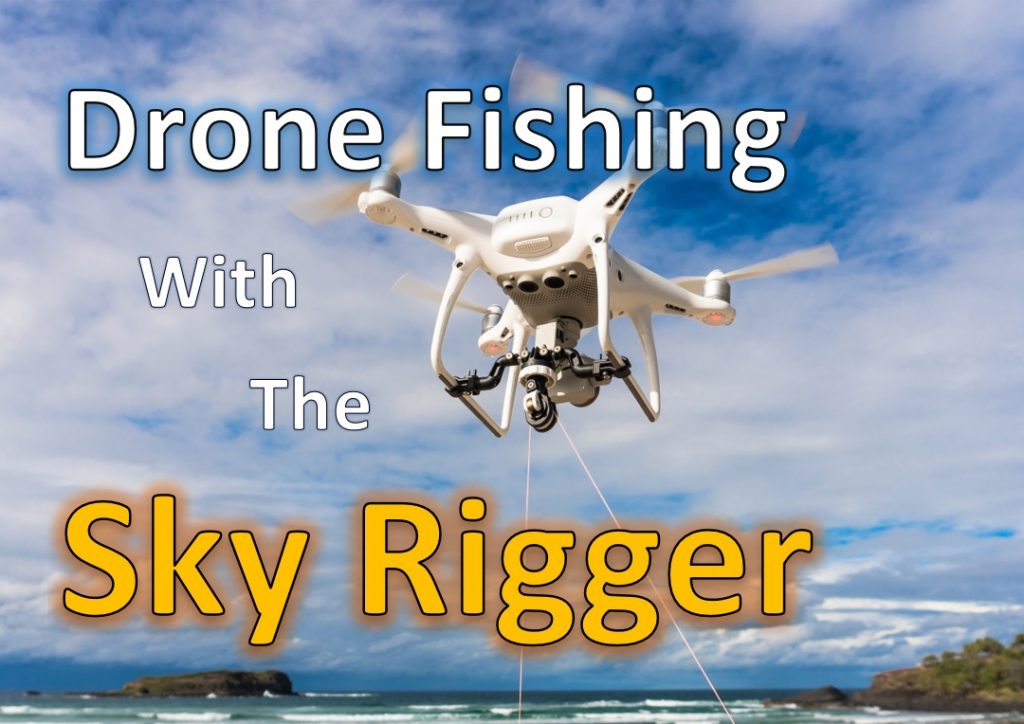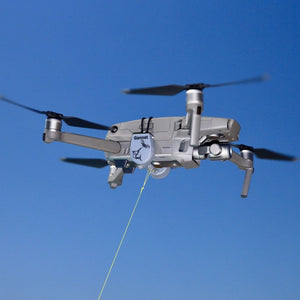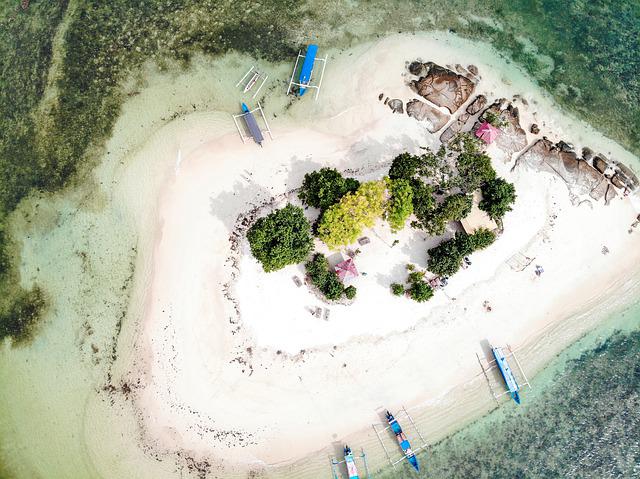
We will be looking at the basics and how to use a drone fishing rig. We'll also be discussing what to consider when choosing your drone, how to charge it, and the payload. We'll then discuss ways to get the best out of your drone. Continue reading for more tricks and tips. You will soon have the drone that you dream of! Let's start!...and maybe catch a few fish!
Basic drone fishing gear
To begin drone fishing, you'll need a good selection of hooks. The fishing line should not be more than twice the length. It should be mono- or braided. It should be tied with a Cat's Paw Loop, Uni knot or Uni knot. You will also need a sinker (2-8 oz) and hooks (to attach to each section of the backbone). Finally, attach the lead loop of your snap swivel to your drone.
There are many ways to create a fishing drone. A basic one involves attaching a hook to the landing gear of the drone and spinning it until the line releases. You can also use a dropper or drop line to keep the fishing line down below the drone. Droppers allow you to keep your main line under the drone, without it getting tangled up with propellers. A dock and battery pack can also be added to the fishing drones.
After you have purchased the drone fishing rig you will need additional equipment. A long fishing line (approximately 700m) and a bait-dropping device are essential. These are optional accessories, but they can make your drone fishing adventure more enjoyable. A drone will give you a clearer look of your surroundings so you can spot fish better.

Payload on drone fishing gear
You need to know the safety precautions that must be taken if you plan to catch a fish with a drone. Your drone should not be flown in strong winds or rain. Here are some suggestions:
First, ensure that your drone is strong enough to carry your weight. It won't be stable if loaded with braided rope or heavy lures. If you are fishing near the seaside, wind can blow the drone off course. It's also important to check local regulations and laws, as some may not allow fishing from a drone. You need to ensure that your drone is strong enough to carry you when you go fishing.
Next is to determine what accessories you will need to mount to your drone. To reduce the weight distribution issues, it is a good idea to use a rigging system with a central attachment point. Motor struts or landing gear and the legs of the drone are all good options for attaching. Avoid attaching any payloads to the camera or gimbal as these could cause damage. A simple solution is to tie a length of fishing line from one corner to the other. To stop the line from falling out, you can attach tape to it.
Battery life of drone fishing equipment
Before you take off fishing with your drone, make sure to check all the gear and batteries. This will help you keep the drone from running out of battery life and allowing you to focus on fishing instead of recharging. You can charge some drones with solar panels or car batteries. Make sure your batteries are fully charged before you start. This will ensure your drone is ready for flight as soon as your reach your fishing spot.

Another important factor to consider is the drone's flight time. While some drones can fly longer than others, the average drone can fly for around twenty-two mins. This is great for those who want to spend hours out on the water with their drone. A drone that has limited endurance is likely to be unusable and renders it impossible to catch fish.
Once you have set up your fishing rig, attach your fishing line clip to the legs of the drone, or to the motor struts. Attach the bait to your fishing line. Make sure that you lock your reel before you fly your drone. Once you are ready, unlock it. Once you release the line, tension will build and the drone will drop the bait in the water. The battery may not work properly if it isn't charged after each use.
FAQ
With a drone, can someone spy on me?
Yes, anyone can use a drone to spy on you. To protect yourself from drones, you must be aware of them. Notify 911 immediately if you find a drone in your vicinity.
What laws govern flying drones in the United States?
In the United States, the Federal Aviation Administration (FAA) regulates all aspects of drone operations. First, you need to obtain a FAA certificate in order to operate a drone commercially. First, you need to take a course about piloting and pass an exam. The final step is to pay the fee.
What is the law about drones flying on private property?
Recently, the FAA issued new rules regarding commercial drone flight. These rules are only applicable to UAVs that weigh less than 55 pounds and fly below 400 feet above ground. Commercial operators must register at the FAA and apply for a license. Local authorities must also approve them if they are operating near airports or in other restricted areas.
What kind batteries does a drone need?
The majority of drones use lithium-ion cells. A typical drone uses between 3 and 6 volts.
How can I keep drones from my home?
Drones are becoming more common for home surveillance. However they can also be a threat to privacy or security. If you want to avoid drone attacks, you should install motion sensors around your property and use them to detect any unauthorized flying objects.
Can I fly my drone indoors without a license?
Yes, you can fly your drone indoors. You just have to ensure no obstacles or hazards inside your home. For instance, avoid flying near windows and doors, heating vents, heating units, air conditioning units, electrical outlets or water pipes.
Can I fly my drone around my neighborhood?
Yes! These are known as UAVs (unmanned air vehicles). There are several types of drones available for sale today, from small quadcopters to large fixed-wing aircraft. New rules have been issued by the FAA regarding commercial use of UAVs. This means that you can legally fly them for business purposes. Be aware that UAVs operating near airports could cause interference to air traffic control systems. You must get permission from the authorities before you can fly one.
Statistics
- With the top 10% making over $100/h and the bottom 10% making as low as $10/h. (dronesgator.com)
- Research and Markets predict a growth rate of 51.1% over the next five years. (thedroneu.com)
- According to Indeed, a drone pilot gets paid $25.73 per hour on average in the US. (dronesgator.com)
External Links
How To
How to Fly Drones at a Beginning Level
A drone is an unmanned aerial vehicle that can be remotely controlled and used for surveillance, aerial photography, film production, research, and other hobby purposes. Drones are a technology that has been around since World War II. DJI's Phantom quadcopters became commercially available in 2010. Since then, there have been many different types of drones available, from beginner-friendly models like the Parrot AR Drone 2.0 to professional-grade multi-rotor craft like the DJI Mavic Pro.
You can fly a drone in many different ways, including:
-
Remote control – This is when you attach a device to your hand that allows you to control the drone's flight path. There are two main types: Joysticks (like a radio), and On/Off switches (like an alarm clock).
-
Manual Control - This method uses a smartphone app to remotely control the drone using GPS coordinates. You will need to keep track of where the drone is going and follow the directions from the app.
-
Autonomous Flight - This method involves leaving the piloting duties to the drone itself. It basically flies autonomously without any human intervention. A drone must have a builtin camera and sensors capable to capture images and other data.
-
Triggered Flight – This method is very similar to manual flight. The pilot creates a route that the drone will follow until it reaches the destination. Once the programmed route is completed, the drone lands automatically and returns back to the base.
-
Landing Gear: Some drones have landing gear that allows them safely to land in case they lose power or run low on battery.
-
Goggles - Pilots may wear goggles to shield themselves from flying debris.
-
Camera - You can capture photos and videos with your drone from the air.
-
Obstacles. Some drones can have obstacle avoidance technology that stops them from hitting obstacles.
-
Speed - Some drones can reach speeds of over 40 mph.
-
Battery Life - Most drones last between 20 and 3 hours depending on how much power they have.
-
Range - Depending on the model, some drones can travel up to 30 miles away.
-
Power source - Not all drones can use an external power source. Others can run on internal batteries.
-
Weight - Some drones can be as light as 1 pound while others can reach 4 pounds.
-
Size - Drones can range in size from tiny devices that can fit in your palm to heavy crafts that weigh 50 pounds.
-
Price - From high-end models that cost thousands of dollars to low-cost options that start at $100, all drones fall under a certain price category.